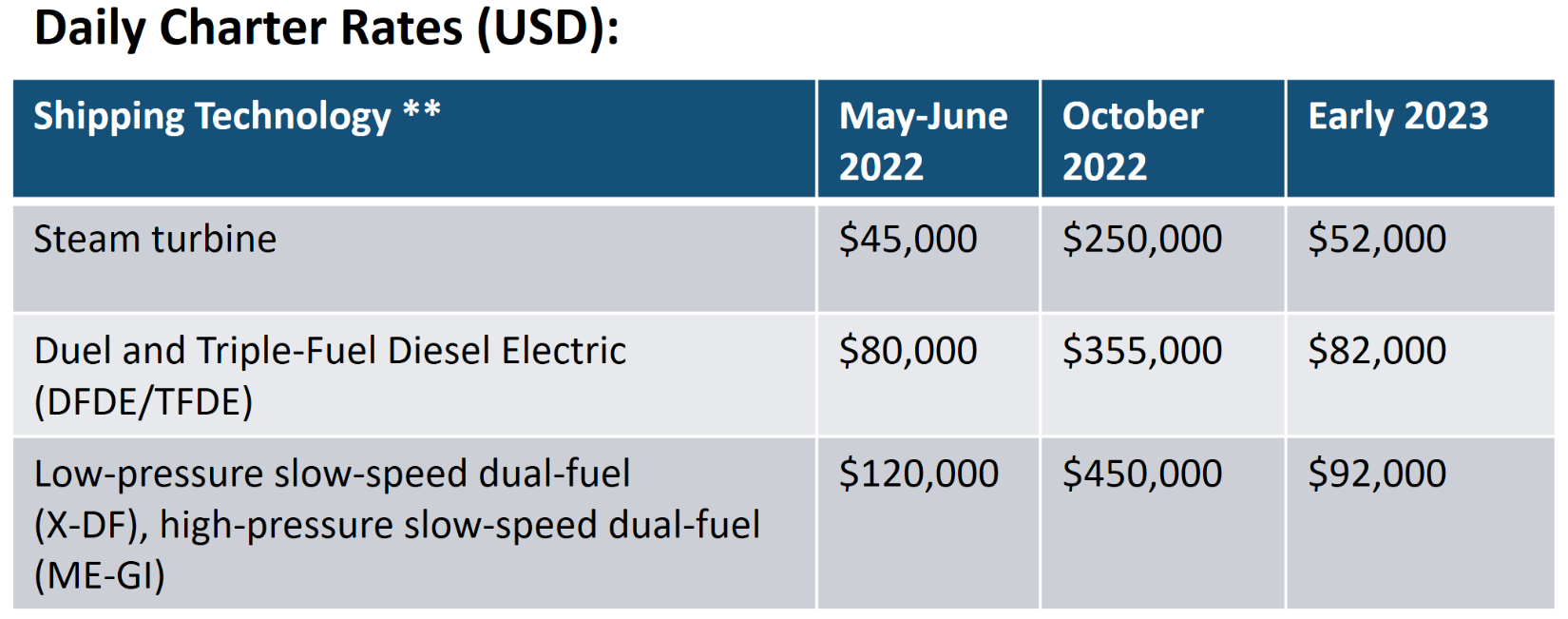Your cart is currently empty!
January 11, 2024
Daily LNG shipping charter rates by vessel technology type and a discussion on the global LNG shipping fleet.

LNG Shipping Fleet:
The global LNG fleet increased by 4% in 2022 with the delivery of 27 new vessels and grew by another 11 vessels in the first four months of 2023 to ~ 670 active vessels; includes 45 operational Floating Storage and Regasification Units (FSRUs) and 8 Floating Storage Unit (FSUs).
There are currently 312 newbuild vessels under construction, almost 50% more than the existing fleet; 28 of these new vessels are expected to be delivered by the end of 2023 and a further 81 in 2024.
There were 6900 trade voyages in 2022, with increased shipping to Europe to offset Russian gas pipeline declines due to the Ukraine / Russia conflict.
At the beginning of 2022, charter rates eased briefly before ticking upwards with the start of the Russian invasion of the Ukraine in February. This sparked increased LNG demand in Europe pushing charter rates higher.
Rates reached USD $45,000/day for steam turbine vessels, $80,000/day for DFDE/TFDE vessels and $120,000/day for X-DF/ME-GI vessels by mid year.
With a decline in Russian gas expected, Europe began to prepare for winter in August 2022, leading to dramatic rate increases by the end of October; $250,000/day for steam turbine vessels, $355,000/day for TFDE/DFDE vessels and $450,000/ day for X-DF/ME-GI vessels.
A milder than expected winter in 2022/2023 led to high storage inventories in both Europe and Asia causing charter rates to soften considerably.
Heading into the winter of 2023, the Panama Canal is experiencing low water levels (due to drought in the region) which has led to a restriction on the number of transits.
This is forcing some LNG shippers to either pay millions to jump the queue or alter their route to round the Cape of Good Hope which adds thousands of extra miles and about two weeks to the total trip.
In 2024, the demand for shipping is expected to increase by almost 20%, putting upward pressure on rates.
Post 2024, charter rates are expected to decline due to large investments in new ships, and fleet optimization.
See Also:
LNG Shipping Distances To Asia (Approximate)
LNG Export & Import Shipping Routes

